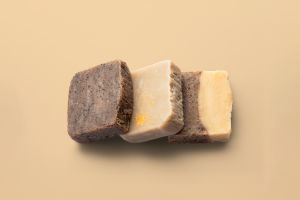A stethoscope is a medical device that is commonly used by doctors, nurses, and other healthcare professionals to check the sounds of a patient's heart, lungs, and other internal organs.
It is designed to amplify the sounds inside the human body so that medical professionals can hear and assess the patient's health more clearly.
Despite today's rapidly changing medical devices, stethoscopes still play an important role in daily medical diagnosis.
The invention of the stethoscope dates back to the early 19th century when French doctor René Laennec created the device to solve the embarrassment of listening to a patient's heart directly against his ear.
The original stethoscope was quite simple, just a wooden hollow tube through which doctors transmitted the patient's heartbeat and breathing sounds to their ears.
Laennec's invention gradually changed the field of medicine and pioneered indirect auscultation. Over time, the structure of the stethoscope has gradually evolved to become more complex and effective.
Modern stethoscopes are usually composed of several key parts, including earplugs, tubes, chest pieces, and diaphragms. The earbud is the part that the doctor or nurse uses to receive the amplified sound.
It is inserted directly into the ear and is designed to be comfortable and tight to prevent interference from external noise. The catheter is a flexible rubber or plastic tube that connects the chestpiece and the earbud and plays the role of transmitting sound.
The chest piece sometimes called the stethoscope head, is the part that contacts the patient's body surface. It is directly attached to the skin and is used to capture the sounds inside the body. The chest piece usually consists of two parts: the diaphragm and the bell face.
The diaphragm is used for auscultation of high-frequency sounds, such as lung sounds and heart sounds, while the bell face is used for auscultation of low-frequency sounds, such as heart murmurs.
The design of the modern stethoscope is both functional and ensures that the user can obtain the most accurate information possible when making a diagnosis.
The use of stethoscopes in medicine is wide and diverse. It is considered one of the most common tools used by doctors when performing physical examinations. With a stethoscope, doctors can diagnose a variety of potential health problems.
For example, auscultating the heart can help doctors determine if there is a heart murmur, irregular heartbeat, or symptoms of heart failure.
Doctors can also determine if there is asthma, pneumonia, or other respiratory diseases by auscultating the lung sounds. In addition, the stethoscope can also be used to detect abdominal bowel sounds to assess whether the intestinal function is normal.
Although the importance of the stethoscope in the medical community is obvious, the status of the stethoscope has been challenged with the advancement of technology, especially the rise of imaging and electronic devices.
Modern medical imaging technologies, such as ultrasound, electrocardiogram, and nuclear magnetic resonance, can provide more detailed images and data of the internal body, helping doctors to make more accurate diagnoses.
However, even so, the stethoscope is still widely used because its simplicity and immediacy make it irreplaceable in many clinical situations.
The stethoscope does not require power, is portable and easy to use, and can quickly provide the information needed by doctors. Especially in resource-limited environments, the stethoscope is still an invaluable tool.
In recent years, the technology of stethoscopes has also been continuously improved, and electronic stethoscopes are one of the innovations. This type of device amplifies the sound through digital technology, and can even reduce the interference of background noise through noise reduction technology.
Some electronic stethoscopes can also digitize the sound heard and transmit it wirelessly to a computer or other device for doctors to analyze and record in more detail. These innovations have made the stethoscope more advanced and enhanced its application value in modern medicine.
The stethoscope is not only a great medical invention, but also a milestone tool in the history of medicine. Its simple yet effective design has helped countless doctors diagnose and treat patients for hundreds of years.
Even today, with the development of modern technology, the stethoscope still maintains its importance and continues to play a unique role in the field of medicine.


